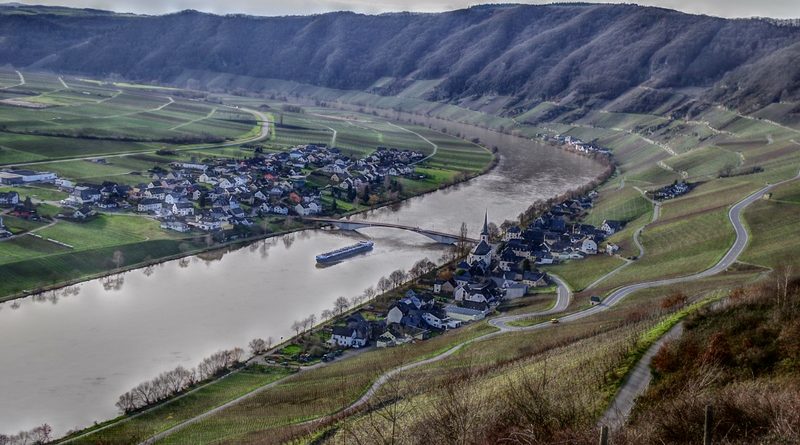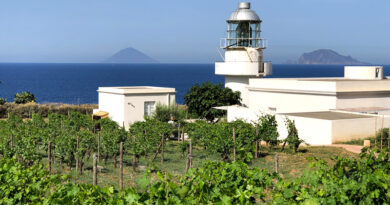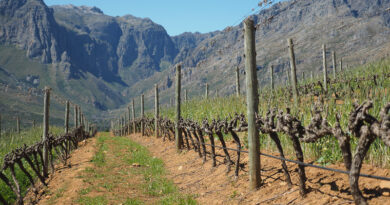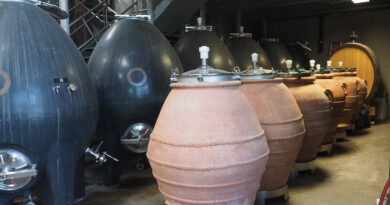German champions: the multiple faces of Riesling
This was a tasting of six Riesling wines from members of the VDP – a private German winery association founded in 1910. It consists of 11 regional associations, and there are 196 member wineries. New members are sometimes added, but wineries get kicked out too. VDP stands for Verband Deutscher Prädikatsweingüter (which translates as the Association of German Superior Quality Wine Estates).
‘They are committed to producing terroir-driven wine,’ says Caro Maurer, who led this 67 Pall Mall virtual tasting together with Richard Bampfield. ‘This is actually an exception, where wine law in Germany puts sugar at harvest level above all.’ The German wine law of 1971 set the sugar level at harvest as a rule, so the higher the sugar level, the better the quality: this is the Pradikat system. The VDP arose because some wineries wanted to return to a classification that looked at vineyards instead, rating them by their quality.
The VDP set rules for membership. Wineries who wish to join have to own the vineyards and wineries where the wines are made. They can only use certain grapes. VDP members harvest just 3% of the annual crop in Germany but owns 5% of the vineyards, which indicates that they have lower yields than the average. This 3% accounts for 7.5% of the value sales of German wines, which means they are more expensive.
Germany has 100 000 hectares of vines, so VDP accounts for 5000 hectares. The average area owned by a GDP estate is 26 hectares, which is relatively small. Yields average 71 hl/ha, which sounds quite high, but goes down for the top wines.
The whole point of the VDP is grading terroirs, with a view to recognizing the best. Since a revision in 2012, vineyards are classified on four levels:
- VDP Grosse Lage (equivalent to grand cru)
- VDP Erste Lage (premier cru)
- VDP Ortswein (village level)
- VDP Gutswein (regional)
Only the top two tiers are allowed to mention the vineyard name on the label. So a Grosses Gewächs (GG) is a top wine made from a Grosse Lage by a member of the VDP. These wines have to be dry (under 9 g/l residual sugar). There’s one more layer of complexity: for each region, only certain varieties can make GG wines. If you see GG on a bottle, then you know it is pretty serious, and that it’s made in a dry style (trocken) from a top vineyard site.
The German wine law of 1971 amalgamated 30 000 named vineyard sites and consolidated them into 3000 accepted vineyards. This lost a lot of the differentiation of interesting terroirs. Gutswein is high calibre entry level wines and come from an estate’s holdings. Ortswein comes from the villages best vineyards, but ones that aren’t higher graded. Other varieties can be used. Erste Lage comes from a premier cru vineyard as designated on the old maps. Maximum yield is 60 hl/ha, and only traditional varieties are allowed. The Ahr, Mittelhein, Mosel, Nahe and Rheinhessen don’t use this classification. They go from Orswein to Grosse Lage. Grosse Lage is grand cru equivalent, with traditional varieties and maximum yield of 50 hl/ha. VDP Grosses Gewächs is the name for a dry wine from this site, and each producer can only produce one GG from each site.
A Christmann Riesling Trocken Gutswein 2019 Pfalz, Germany
11.5% alcohol. Christmann is a biodynamic winery based in the northern part of the Pfalz wine region, and this is their entry level Gutswein. A warm vintage, but not too warm. It’s linear, fresh and mineral with a nice citrus core with some mineral notes under the limey fruit. Juicy and dry with nice precision, showing a lovely linear character and a stony finish. Very limey and bracing with good acidity. Has a hint of mint on the finish. 90/100
A Christmann Königsbacher Riesling Ortswein 2018 Pfalz, Germany
12% alcohol. From younger parts of the Idig vineyard. This is taut, lemony and bright with some focused notes of herbs and spice with a touch of honey and good supporting acidity, as well as some smoky, mineral notes. Dry and taut with nice presence. 90/100
A Christmann Königsbacher Idig Riesling Grosses Gewächs 2014 Pfalz, Germany
12.5% alcohol. This is dry and nuanced with notes of honey, spice, lime and wax. It’s nuanced and expressive with a lovely grainy texture. There’s real complexity here: it’s not about primary fruit, but rather complex layers of herbs, spices and nuts. The acidity is pronounced but it is masked with a creamy texture. Very stylish, with a lot to come in the future. Compact and expressive with nice precision. It has a future. 93/100
Caro Maurer explained that Rieslings acidity and low pH means that it can often age well. Sweetness also protects a wine. Riesling has a very high extract. ‘It is getting more interesting the older it gets,’ she says. She has tasted a Riesling from 1811 with Richard Bampfield. They say that it was still very much alive. ‘You could still find fruit, you could still find acidity, you could still find refreshment,’ says Bampfield.
K.F. Groebe Aulderde Riesling 2008 VDP Grosse Lage, Rheinhessen, Germany
13% alcohol. Clay soils with some limestone. Sweet and honeyed on the nose, this shows notes of peach, melon and lime cordial, with some fine spiciness. There’s a lovely stony, mineral character here, with some orange peel characters, and some dried herbs. Lots of spiciness here, with some apple notes and some bergamot and green tea. Lovely complexity with a touch of sweetness. Very fine and drinking at its peak now: such an interesting wine. 94/100
Forstmeister Geltz-Zilliken Riesling Kabinett Saarburger Rausch Grosse Lage 2019 Mosel, Germany
8.5% alcohol, 60 g/l residual sugar. Supple, sweetly fruited and balanced with some herbs and lime peel, as well as a bit of white peach and mango. There’s some mint, too. Such a supple wine with nice precison. A light, expressive, almost weightless wine with the sweetness and acidity in nice balance. It’s high sugar for a Kabinett, but it stays fresh and very drinkable with a lovely primary character. Fruity and expressive. 91/100
‘Maybe we shouldn’t be trying to describe these wines in terms of dry and sweet,’ says Bampfield, ‘but it’s hard not to. Certainly, in terms of how I have been used to describing wine, this has always been part of the dialogue.’ He says it would be good if we could avoid this, because this wine has always been about freshness, drinkability and moreishness. ‘It is so mouthwatering!’
Forstmeister Geltz-Zilliken Riesling Spätlese Saarburger Rausch Grosse Lage 2019 Mosel, Germany
8% alcohol, 86 g/l residual sugar. Rounded, intense and well balanced with mandarin, peach, melon and lime notes. Quite viscous and intense, but still very fresh, showing nice texture and depth. There’s some honey and spice. Lovely texture and richness, with a jelly-like character. Quite focused and expressive, and unique to the Mosel in style. So pretty and focused: there’s a deliciousness to this wine now, but it could develop in interesting ways. 92/100
Find these wines with wine-searcher.com




